Worldfolio Interview – February 26, 2025
While the separator production industry focuses on increasing production yield and reducing costs, ST Youngwon
emphasizes large width and customization.
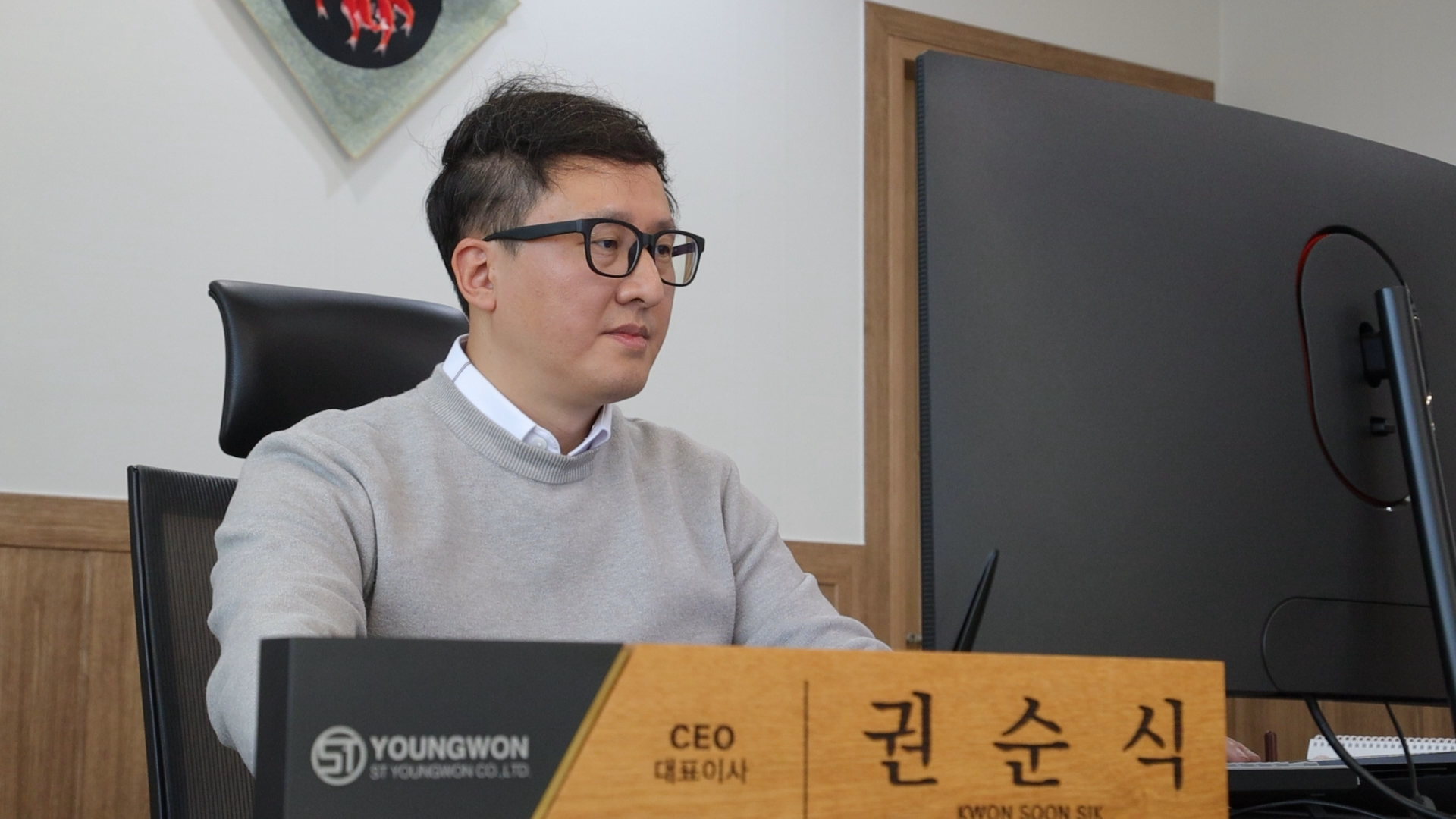
<SOON-SIK KWON, CEO OF ST YOUNGWON>
SOON-SIK KWON | CEO OF ST YOUNGWON
📌In Korea’s domestic market, increasing saturation has made it challenging to gain new market share. Experts now suggest this could be an ideal time for Korean companies to consider exporting, especially with regulations like the Inflation Reduction Act and the CHIPS Act promoting onshoring and supply chain restructuring—factors that could benefit Korean companies. Do you agree that this is a favorable time for small and medium-sized enterprises (SMEs) to diversify and internationalize? What do you see as the primary challenges and opportunities in collaborating with overseas companies?
I believe this is an opportune time for Korean SMEs to enter the international market. Historically, Korean SMEs have relied heavily on large conglomerates, supplying directly to them and benefiting from their growth. But today, and in the coming years, I see a strong potential for SMEs to step out and establish a presence globally. However, a significant challenge lies in competing not only with these domestic conglomerates but also with major players in international markets—companies from Germany, Japan, and Taiwan, to name a few.
Speaking specifically about the secondary battery industry, Korean companies have been engaging with other key players, like WCP(W-Scope). Until recently, the secondary battery sector was relatively stagnant, but now there is a strong push to expand on the global stage. This is indeed critical; entering the global market means competing with countries like China, where manufacturing systems are rapidly expanding and where they can offer some of the lowest prices. In addition, established companies from other developed countries already hold significant reputations in the global market, something we’re still building. These are some of the core challenges we face as we look to expand internationally.
📌Since batteries are central to electric vehicles, cost and safety are paramount. There is a growing trend to treat batteries as commodities rather than proprietary technologies, with efforts focusing on cutting prices and increasing productivity. For separators, this trend is even more pronounced, which could lead to more regional battery separator production worldwide. How do you see the separator market evolving over the next three to five years to meet 2030 goals?
As you noted, separators are crucial within the battery industry, especially for electric vehicles and the secondary market. The idea of producing separators closer to regional battery production centers worldwide is already in motion. Right now, China manufactures around 70% of the world’s batteries, but this is changing with new market entrants, including the United States, Europe, and India, which are becoming increasingly competitive in the secondary battery space. India, for example, is emerging as a key player in battery manufacturing.
While visiting China, one can see that approximately half of the vehicles, including motorcycles, are electric—a level not yet reached in India, the United States, or Europe. However, these regions are developing rapidly, and they’re likely to adopt secondary batteries and electric vehicles at an accelerating pace.
In international competition, Indian companies offer lower prices, while the U.S. and Europe have strong supply chains for producing batteries domestically. Korea, on the other hand, excels in the production of raw materials, with competitive infrastructure and high-quality standards to support our technological advancements. Looking ahead, I foresee intense competition among China, Korea, and India in the raw materials market for secondary batteries.
📌Taking a step down the supply chain to the level of production equipment, you mentioned that Korean SMEs often find themselves “sandwiched” between different competitors. I’m an engineer with five years of experience working in Japan, and in my work with Japanese companies, I noticed they’re not very flexible in terms of price competitiveness. They excel at high-spec products, but their pricing is rarely competitive. On the other hand, while China has strong core capabilities, it often falls short on quality. You’ve managed to succeed in China, achieving over $30 million in sales. Can you share the approach that allowed you, as a separator equipment manufacturer, to grow so quickly over the past two to three years?
I agree with your observations on Japanese and Chinese companies. When we meet with clients who have experience with German and Japanese companies, they’re often very satisfied with the quality and technology but find the price and speed lacking. Japanese companies, for instance, tend to move slowly, and their products come at a premium price. China, by contrast, offers speed and affordability but often sacrifices quality. Korea, in many respects, represents a middle ground—we offer good quality at a reasonable price.
Our company, ST Youngwon, has a unique competitive edge in this area. We’ve developed the 8300 series, a highly innovative production line that German and Japanese companies have been struggling to match. When we presented this to our clients, the response was overwhelmingly positive due to the combination of high quality and efficiency. If we continue developing this line and building client trust, I’m confident we’ll maintain a strong competitive position.
📌Let’s discuss your DURONIC 8300 series, which increased separator film width by over 30%. How did you achieve increasing the size to 8.3 meters wild where all other competitors are limited to around 5 meters? How has your team been able to reach this level while maintaining cost, quality, and yield?
Developing the 8300 series was challenging and required extensive problem-solving. In secondary battery manufacturing, it’s not just about having advanced machinery like those from Brückner in Germany or JSW in Japan; merely owning high-spec machinery does not guarantee success. Rather, success hinges on how you operate and optimize that machinery. Film production, specifically, is directly tied to manufacturing success. Even with top-tier equipment, improper use can lead to defective products.
To overcome this, we assembled a team of highly skilled engineers with 10 to 15 years of experience. Together, we identified the technical obstacles we needed to address in the development phase. We also secured government support through grant programs, which helped us tackle complex technical requirements, such as ensuring precise airflow through the many nozzles involved, as well as refining the clamping magnets, the closing system, and the extraction equipment.
This process was not without risk. The machinery involved is incredibly expensive, and a failure would impact not only us but also our clients. Nonetheless, we relied on our expert team and dedicated R&D unit, which enabled us to successfully bring the DURONIC 8300 series to market. To my knowledge, the 8300 series remains unmatched globally, and the production site in China is currently the only one in the world using it.
📌Korean companies excel at adopting digital technologies to enhance production capabilities and management. How are you advancing technology to stay competitive and disruptive in the industry? Specifically, how do you incorporate AI, digital technology, or automation?
Digitalization has limitations in film and separator manufacturing, but we are taking steps to maximize it. As I mentioned, production quality can vary greatly depending on the operator; their expertise determines whether we achieve Level A, B, or C output. This places a huge responsibility on on-site managers. To address this, we are working on standardizing our processes by automating data collection critical to secondary battery production, such as temperature and airflow. Automated systems will identify the optimal data points for consistent, high-quality production. Previously, the manual TDO tasks, which were performed by hand, will be automated through automatic width adjustment system, enabling the computer server to take on the roles of detection, diagnosis, and control.
This initiative is still in development, but once completed, we’ll not only upgrade existing machinery at our clients’ sites but also introduce new products and technology for future clients. Currently, our production process is about 60% automated, with the remaining 40% handled by skilled professionals. With this enhanced automation, we aim to reach an 80% automation level, minimizing risk. Our R&D team consists of numerous AI experts who play a key role in this transition.
📌Established in 2021, ST Youngwon specializes in innovative production systems for lithium-ion battery wet separators. Despite being a newcomer in a mature market dominated by Japanese and German companies, ST Youngwon has achieved significant milestones, including the $30 million export tower award and leadership with the 8300 series. As a young company led by a young CEO, what is your vision? Could you also elaborate on the challenges newcomers face in this industry?
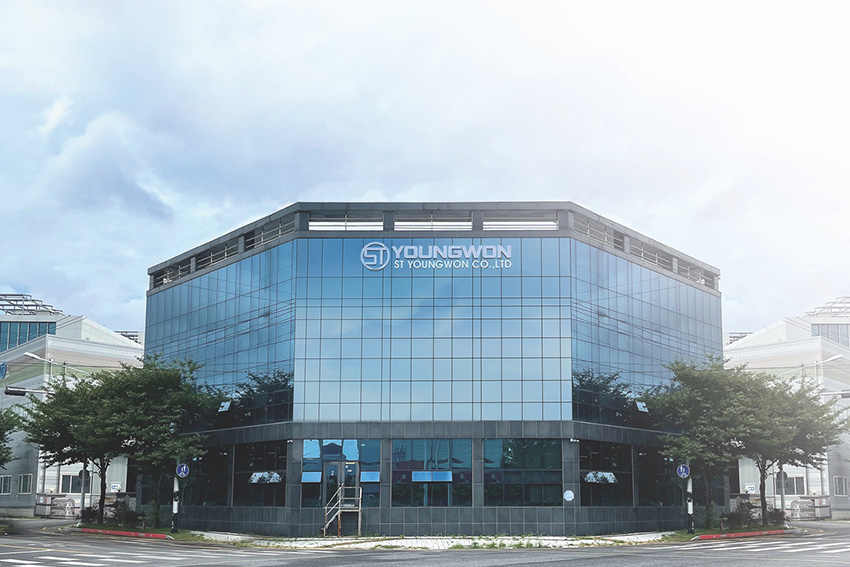
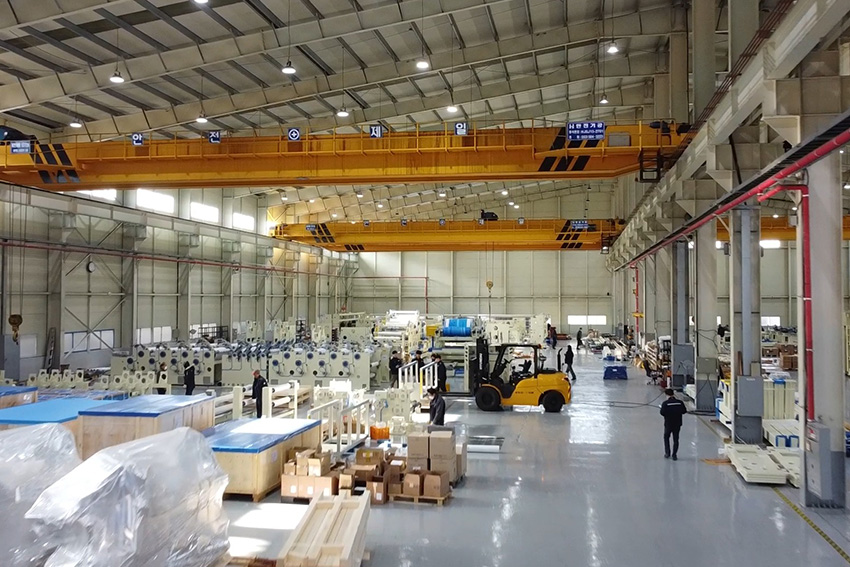
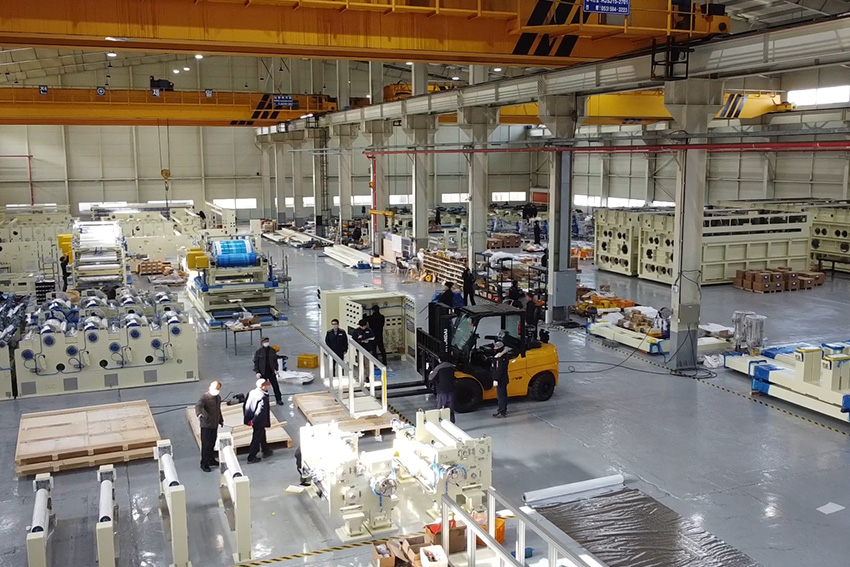
<Inside the Korea factory>
Our priority is product customization. Success isn’t just about delivering a product to a client—it’s about communicating and consulting with them to understand their needs, solving any issues they encounter, and providing ongoing support. The relationship doesn’t end at delivery; we’re committed to after-sales service and ensuring our products work seamlessly in their operations.
As you mentioned, we’re a young company with a young workforce, most of whom are in their 30s or 40s. This gives us an edge, as we’re unafraid to embrace AI, develop innovative solutions, and tackle new challenges. As CEO, I prioritize simplifying the decision-making process, enabling us to move quickly. Our clients appreciate this speed and responsiveness.
Looking at the industry more broadly, I believe many Korean SMEs lack opportunities to expand globally. For those that do, the traditional corporate culture won’t suffice in a competitive international market. Competing globally requires creativity, adaptability, and the ability to develop new products and services rapidly.
People often ask me about our company’s goals, especially since much of our data is publicly available online. This is a difficult question to answer because we’re an order- and contract-based business. We’re currently focusing on strategic partnerships with companies in India, but our targets depend on the orders we secure. However, I can share that our revenue goal for next year is 100 billion KRW, and we’re aiming for 150 billion KRW the following year. Simultaneously achieving these goals, we will work to help our customers realize their objectives, striving to become a leading company that drives the global battery industry.
📌You provide one-stop consulting to customers, allowing for product customization and after-sales support. However, as a young company, two main challenges come to mind. First, your market recognition is limited compared to established companies like JSW. Second, while you excel in tailoring products, you may face challenges establishing a local presence as you expand internationally. How do you plan to address these challenges given your company’s structure?
I’ll address the second question first. Regarding local presence, our primary clients are currently in China and India, where Korean equipment and machinery are often viewed as superior to local alternatives. Manufacturing in China or India doesn’t provide a substantial advantage for us right now, as the high quality and reputation of Korean-manufactured machinery is one of our competitive strengths. This focus may change if we expand into the U.S. or European markets, but for now, clients in China and India appreciate and even prefer that our products are manufactured in Korea.
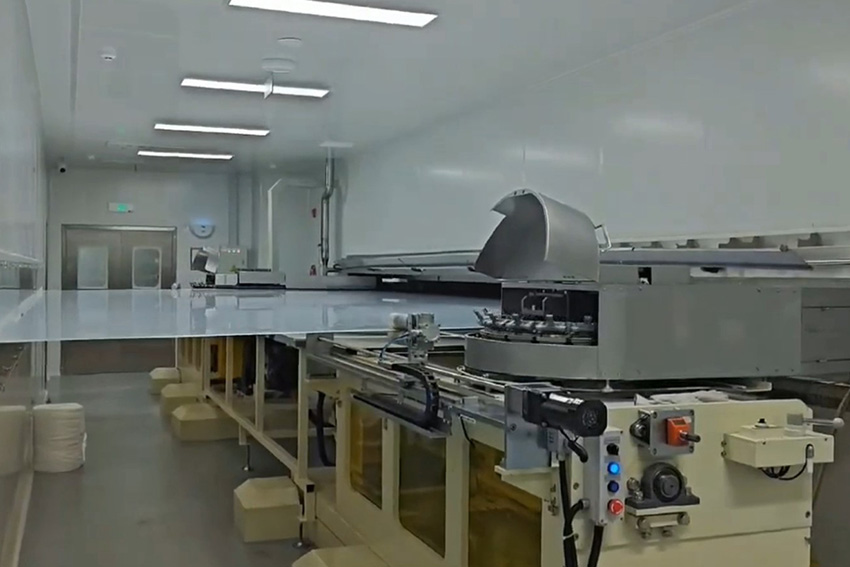
<Production site in China>
As for the first question about market recognition, establishing a complete production line requires a significant investment—around 100 to 150 billion KRW for one production line pair. Our competitors like JSW and Brückner are well-known for their technology and pricing, but we also offer competitive pricing, advanced technology, and a strong track record in on-time delivery. This solid performance has allowed us to gain credibility with our clients, and we’ve proven we can match, and sometimes surpass, larger competitors. So, while we may be a young company, our reputation does not currently limit our ability to meet and exceed client expectations.
📌You mentioned an ambitious objective of reaching 150 billion KRW within the next two years. Assuming continued growth beyond that, what do you see as the main drivers for reaching this target? Are you planning to expand with existing customers, capitalize on new markets, or broaden your product offerings?
Our main focus is the Indian market since the Chinese market has become highly saturated and stagnant. Last October, we participated in a battery show in New Delhi and were struck by the high demand and level of interest from buyers—it far exceeded our expectations. Unlike our competitors, JSW and Brückner, we offer comprehensive consulting services that support clients not only with equipment and machinery but also with strategic guidance on entering the secondary battery industry. While consulting services have seen limited uptake in China, they resonate deeply with our new clients in India, who are asking fundamental questions about entering this field and need end-to-end solutions.
Our “all-in-one” consulting service is unique in the industry and is quickly becoming a major differentiator. Indian clients are seeking guidance on where to start and how to navigate the secondary battery market, and this service, combined with our equipment, is winning them over. This comprehensive approach positions us as their trusted partner rather than just a machinery provider, and I’m confident this strategy will help us reach our target of 150 billion KRW in revenue.
📌The rapid expansion of battery manufacturers into Western markets has disrupted the historically stable separator market, pushing companies to invest in new plants outside Asia. In the U.S., Asahi Kasei recently announced plans for a new plant in Canada, expected by 2027. Meanwhile, in Europe, companies like SK IE Technology, LG Chem (in partnership with Toray), and WCP have been expanding, with new plants in Hungary since 2022. How do you view the U.S. and European markets? Are they short-term opportunities or more of a long-term goal?
I view the Western market conservatively. I think the U.S. and Europe will become centers for companies and factories that produce completed batteries. However, when it comes to materials and components, Southeast Asia, China, and Korea will continue to lead due to significantly lower labor costs. In my view, factories in Southeast Asia and China will focus on producing materials and parts, which will then be supplied to the U.S. and Europe for final assembly into electric vehicles. It’s far more costly for the U.S. and Europe to produce secondary batteries from scratch because they lack cost-effective manufacturing processes. While there is activity in the Western market, I strongly believe Southeast Asia will emerge as a primary hub for producing the essential raw materials for secondary batteries.
📌For our readers, what would you like them to take away from this interview in a few sentences about you or your company?
Many readers are likely familiar with general news about secondary batteries, but that’s often the extent of it. In this interview, we delved into the future trajectory of the secondary battery market, particularly in Europe and Southeast Asia. For readers interested in a deeper understanding of the industry, I hope this interview provides valuable insights into the market dynamics and regional developments shaping this field.
📌For more information, please visit: https://styoungwon.co.kr/
📌Worldfolio Interview: The Worldfolio: ST Youngwon is Disrupting the Battery Separator Market

 에스티영원-로고.png (13.69 KB)
에스티영원-로고.png (13.69 KB)